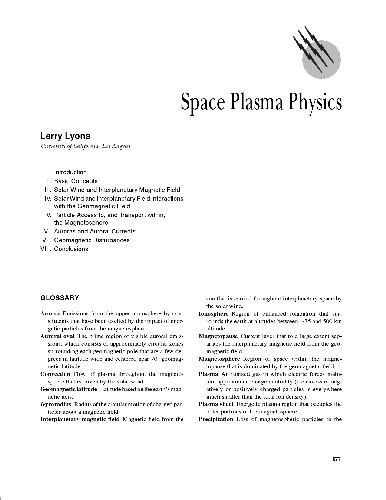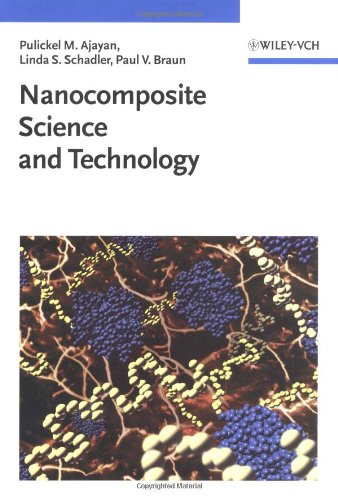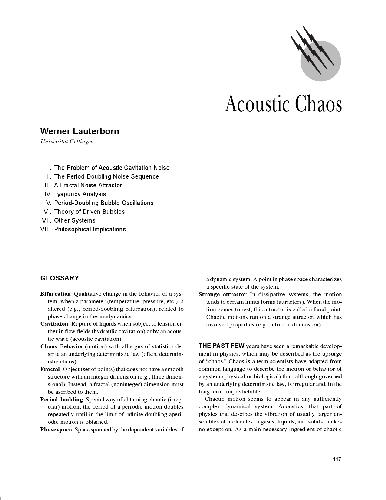Richard G.M. Morris, Lionel Tarassenko, Michael Kenward9780120885664, 0-12-088566-2
Table of contents :
Cognitive Systems: Information Processing Meets Brain Science……Page 4
Contents……Page 6
Contributors……Page 8
Preface……Page 10
Introduction……Page 12
Challenges for the Future……Page 13
Public Debate……Page 14
A New Dawn?……Page 15
Section 1: How to Design a Cognitive System……Page 16
Introduction……Page 18
1 INTRODUCTION……Page 20
1.2 Outline of the Chapter……Page 21
2 SELF-ORGANIZATION IN DEVELOPMENT……Page 22
2.1 Self-organization and Pattern Formation……Page 23
2.1.1 Pattern Formation in the Specification of Forebrain……Page 24
2.1.2 Pattern Formation in the Specification of Neocortex……Page 26
2.1.4 Pattern Formation in the Positioning of Cells……Page 28
2.2 Making the Correct Numbers of Cells: Cell Death……Page 29
2.3 Development of Connections……Page 30
2.3.1 Map Formation……Page 31
2.3.2 Topographic Map Formation in the Visual System……Page 33
2.3.3 The Elimination of Superinnervation from Developing Muscle……Page 35
3.1.1 Ocular Dominance, Orientation and Direction Selectivity……Page 37
3.1.3 The Effect of Neural Activity……Page 38
3.2 Self-organization and the Acquisition of Cognitive Function……Page 39
3.2.1 Cognitive Self-organization……Page 40
3.2.2 Neural Constructivism and Neural Networks……Page 41
4.1 Self-reorganization……Page 42
4.2 Can the Nervous System Regenerate After All?……Page 43
5.1.1 Levels of Analysis……Page 44
5.1.3 Evidence from Invertebrates……Page 45
Further Reading……Page 46
References……Page 47
1.1 State of the Art……Page 49
2.1 Biology in Cognitive Systems: Science and Engineering……Page 51
2.2 Applications of BICAS……Page 53
2.2.2 Networked and Distributed Computing……Page 54
2.3 Opportunities for BICAS……Page 55
3.1 Introduction……Page 56
3.2.3 Synchronization……Page 57
3.3 Five-year View……Page 58
4.1 Introduction……Page 59
4.2.2 Multi-agent Machine Learning……Page 60
4.3 Key Questions……Page 61
4.5 Twenty-year View……Page 62
5.2 State of the Art……Page 63
5.2.1 Autonomous Robots……Page 64
5.2.2 Software Agents……Page 65
Business and Management……Page 66
Auction Agents……Page 67
5.4 Key Research Questions……Page 69
5.5.2 Autonomous Software Agents……Page 71
5.6.2 Autonomous Software Agents……Page 72
Bibliography……Page 73
8 APPENDIX: KEY QUESTIONS……Page 78
Section 2: Cognitive Systems in Touch with the World……Page 80
Introduction……Page 82
3 Representation……Page 85
1 INTRODUCTION: THEORIES AND APPROACHES……Page 86
1.1.4 Opportunity……Page 87
2.1 Protocortex and Rerouting of Development……Page 88
2.3.1 Competition, Cooperation and Compensation……Page 89
2.4 Learning……Page 90
2.5 Reverse Hierarchy Theory……Page 91
3 STATISTICS OF NATURAL SIGNALS……Page 92
4.1 Background……Page 93
4.2 Sensorimotor Integration……Page 94
4.5 Navigation……Page 95
6 FUTURE DIRECTIONS……Page 96
Bibliography……Page 97
1 INTRODUCTION……Page 100
2.2 Object Recognition……Page 101
2.3 Three-dimensional Perception……Page 102
2.4 Visual Tracking……Page 103
2.4.2 Inference Engine……Page 104
2.5.2 Invariant Object Recognition……Page 105
2.6 Silicon Retinas……Page 106
2.7 Open Questions……Page 107
3.2 Continuous Speech Recognition Using Hidden Markov Models……Page 108
3.3 Natural Systems……Page 110
4.2 Electronic Noses……Page 111
4.3 Natural Systems……Page 112
Applications of Data Fusion……Page 113
6 THE NEOCORTICAL MICROCIRCUIT……Page 114
7 LEARNING: PROBABILISTIC GRAPHICAL MODELS……Page 115
References……Page 117
2 STATE OF THE ART……Page 120
2.1.1 The Cognitive and Psycholinguistic Framework for the Study of Language Function……Page 121
2.1.2 Cortical Localization of Language Function……Page 122
2.1.3 Neurobiological Constraints……Page 124
2.1.4 Speech Processing in the Human Brain……Page 125
2.1.5 The Cross-Linguistic Dimension……Page 128
References……Page 130
Section 3: Cognitive Systems in Action……Page 132
Introduction……Page 134
1 INTRODUCTION……Page 136
2.1 Implementation……Page 138
2.2 Computation……Page 140
3 ACTION SPECIFICATION……Page 142
4 ACTION SELECTION……Page 146
4.1 Selection architectures……Page 147
4.2 The Vertebrate Solution?……Page 148
5.1 Open Questions……Page 150
References and Further Reading……Page 151
1 INTRODUCTION……Page 153
1.1 What do We Mean by Social Cognition?……Page 154
1.3 What can be Measured?……Page 155
2 MECHANISMS OF SOCIAL COGNITION: HOW DOES THE BRAIN DEAL WITH THE SOCIAL WORLD?……Page 156
2.2 Recognizing Emotional Expressions……Page 157
2.4 Joint Attention……Page 158
2.6 Perception into Action: Mirror Neurons……Page 159
2.7.2 Knowing that Something is an Agent Like You……Page 161
2.9 Theory of Mind……Page 162
2.11 Interpretation of Complex Emotions……Page 164
2.13 Morality……Page 165
2.14.2 Robot Communication……Page 166
3 WHEN SOCIAL COMMUNICATION FAILS……Page 167
3.1 Autism……Page 168
3.3 Psychopathy……Page 170
3.4 Social Cognition Impairments in Schizophrenia……Page 171
4 SOME BURNING QUESTIONS FROM EVERYDAY SOCIAL INTERACTIONS……Page 172
References……Page 173
1 INTRODUCTION……Page 178
2 AGENT MOTIVATION……Page 180
2.1 Motivation in Psychology, Ethology and Computer Science……Page 181
2.2 Computational Modelling of Motivations……Page 182
2.4 Open Questions……Page 183
2.5 Motivation and Neuroscience?……Page 184
3 AGENT PLANNING……Page 185
3.2 AI Planning……Page 186
3.3 The State of the Art……Page 187
3.3.1 Recent Developments……Page 188
3.3.2 International Planning Competitions……Page 189
3.3.3 Planning in a Wider Context……Page 190
Robots as Executive Machines……Page 191
3.4 Planning: the Future……Page 192
3.5.1 Learning……Page 193
3.6 Open Questions……Page 194
3.7 Conclusion……Page 195
4.1 Machine–Machine Interactions……Page 196
4.2.1 Speech Recognition……Page 198
4.3 Person to Person Interactions……Page 199
References……Page 201
Source Material for Planning……Page 203
Section 4: Memory……Page 204
Introduction……Page 206
1 INTRODUCTORY SUMMARY……Page 208
2.1 Definitions and Concepts……Page 209
2.2 Techniques……Page 211
2.3 Open Questions……Page 213
3 THE ORGANIZATION OF MEMORY SYSTEMS IN THE BRAIN……Page 214
3.1.1 Psychological Characteristics……Page 215
3.1.2 Cerebral Localization……Page 216
3.1.4 Evolution of Working Memory……Page 217
3.1.5 Open Questions……Page 218
3.2.1 Episodic Memory……Page 219
3.2.2 Familiarity-based Recognition Memory……Page 221
3.2.3 Semantic Memory……Page 223
3.2.4 Semantic and Episodic Memory……Page 225
3.2.5 Sensorimotor Skills……Page 226
3.2.6 Value and Emotional Memory……Page 227
3.2.7 Open Questions……Page 229
4 THE NEUROBIOLOGY OF LEARNING AND MEMORY……Page 231
4.1 Long-term Potentiation and Memory……Page 232
4.2 Place-cells, Spatial Memory and Event Memory……Page 233
4.3 Neuronal Development and Learning……Page 234
4.4 Open Questions……Page 235
5 NEURODEGENERATIVE DISEASES……Page 236
5.2 Neurodegenerative Disease……Page 237
6 CAN WE IMPROVE MEMORY?……Page 240
6.1 Pharmaceuticals, Prospects and Perils……Page 241
6.2 Cognitive Engineering……Page 242
6.3 Open Questions……Page 243
7.2 Connecting Networks……Page 244
8.5 Can We Improve Memory?……Page 245
References……Page 246
1.1 State of the Art……Page 251
1.2 Open Questions……Page 252
2.1.3 Background Assumptions……Page 253
2.3 Human and Artificial Neural Computing……Page 254
2.3.2 Lessons from the Comparison……Page 255
2.4.2 Holistic, Bottom-up Approaches……Page 256
3.1 Content Addressable Memory and Associative Memory……Page 257
3.2.2 Twenty-year Horizon……Page 258
3.4 Forgetting……Page 259
3.5 Symbol Grounding……Page 260
3.5.2 Twenty-year Horizon……Page 261
4.1.4 Five-year Horizon……Page 262
4.2.3 Probabilistic Reasoning……Page 263
4.4.1 Five-year Horizon……Page 264
4.5.1 Five-year Horizon……Page 265
4.6.1 Five-year Horizon……Page 266
5.1.2 Twenty-year Horizon……Page 267
5.2.2 Twenty-year Horizon……Page 268
5.4 Machine Learning……Page 269
5.5.1 Five-year Horizon……Page 270
References and Further Reading……Page 271
Further Reading……Page 272
6 APPENDIX: OPEN QUESTIONS AND POSSIBLE RESEARCH DIRECTIONS FOR THE FUTURE……Page 273
Section 5: Science Applied……Page 276
1 INTRODUCTION: TECHNOLOGICAL DEVELOPMENTS IN COGNITIVE AND IMAGING NEUROSCIENCE……Page 278
2.1 State of the Art……Page 279
2.2 Neurophysiology……Page 280
2.3 Multimodal Integration……Page 281
2.5 Computational Neuroanatomy……Page 282
2.6 Potential Clinical Applications of Neuroimaging……Page 284
2.7 New Technologies……Page 285
3.2 How do Populations of Neurons Represent Information?……Page 286
3.3 New Methods for Recording Spiking Activity of Many Neurons……Page 287
4.1 Introduction……Page 289
4.2.2 Recent Advances in Microscopy Techniques……Page 290
4.2.4 Biosensors……Page 291
4.3 Optical Imaging of Intrinsic Signals in the Brain……Page 292
4.4 Non-invasive Optical Techniques: Near-infrared Spectroscopy……Page 293
Further Reading on Optical Imaging……Page 294
References……Page 295
Web Sites……Page 297
1.1 What are Cognitive Systems?……Page 298
1.2.1 Hofstadter’s Law……Page 299
1.3 Characteristic Capabilities……Page 300
1.3.2 Act……Page 301
1.3.6 Learn……Page 302
1.4 Motivations……Page 303
2 APPLICATIONS AND SOCIETAL IMPACT……Page 304
2.1.1 The Ambient Web……Page 305
2.1.2 Commercialization Concerns……Page 306
2.2.1 Multi-Agent Network Systems……Page 307
2.3 Embodied Cognition: Robots and Smart Things……Page 308
2.4.2 Applications……Page 310
Neurofeedback……Page 311
Assisted Cognition……Page 312
2.5 Transport……Page 314
2.6 Sociable Technologies: Arts, Entertainment and Companions……Page 315
2.8 Military……Page 317
3 WIDER VIEW……Page 318
References……Page 319
B……Page 320
E……Page 321
M……Page 322
P……Page 323
S……Page 324
X……Page 325







Reviews
There are no reviews yet.